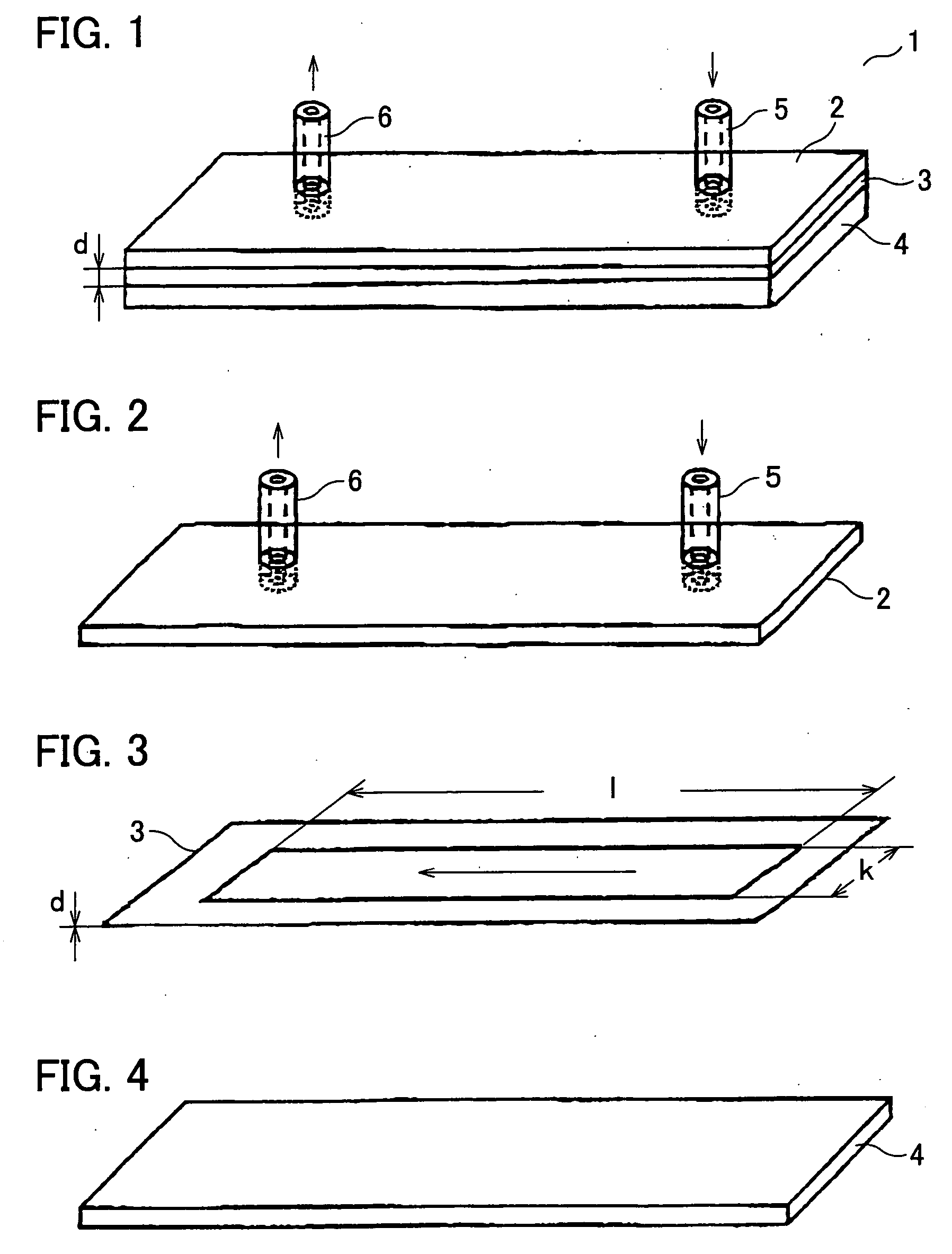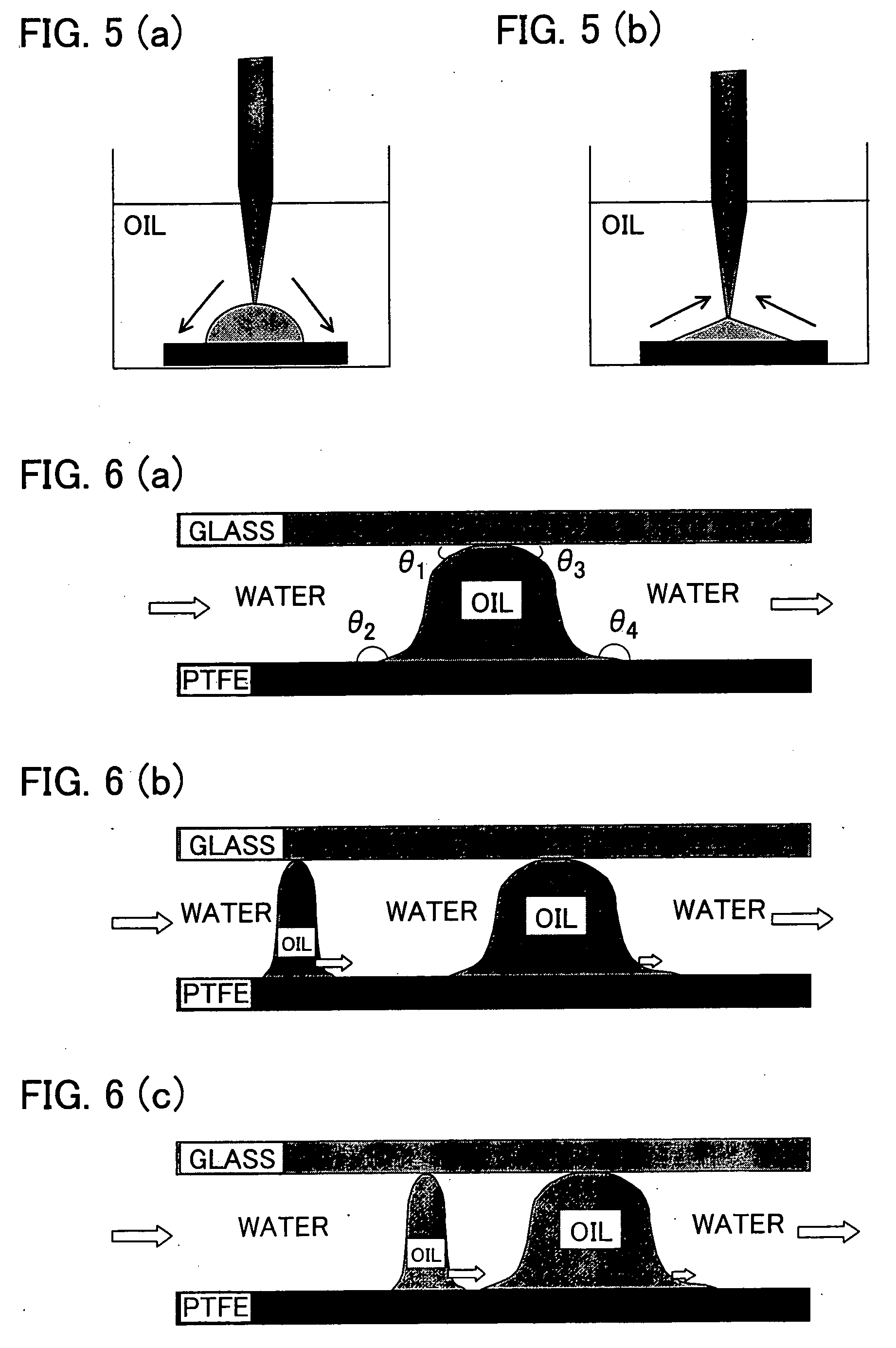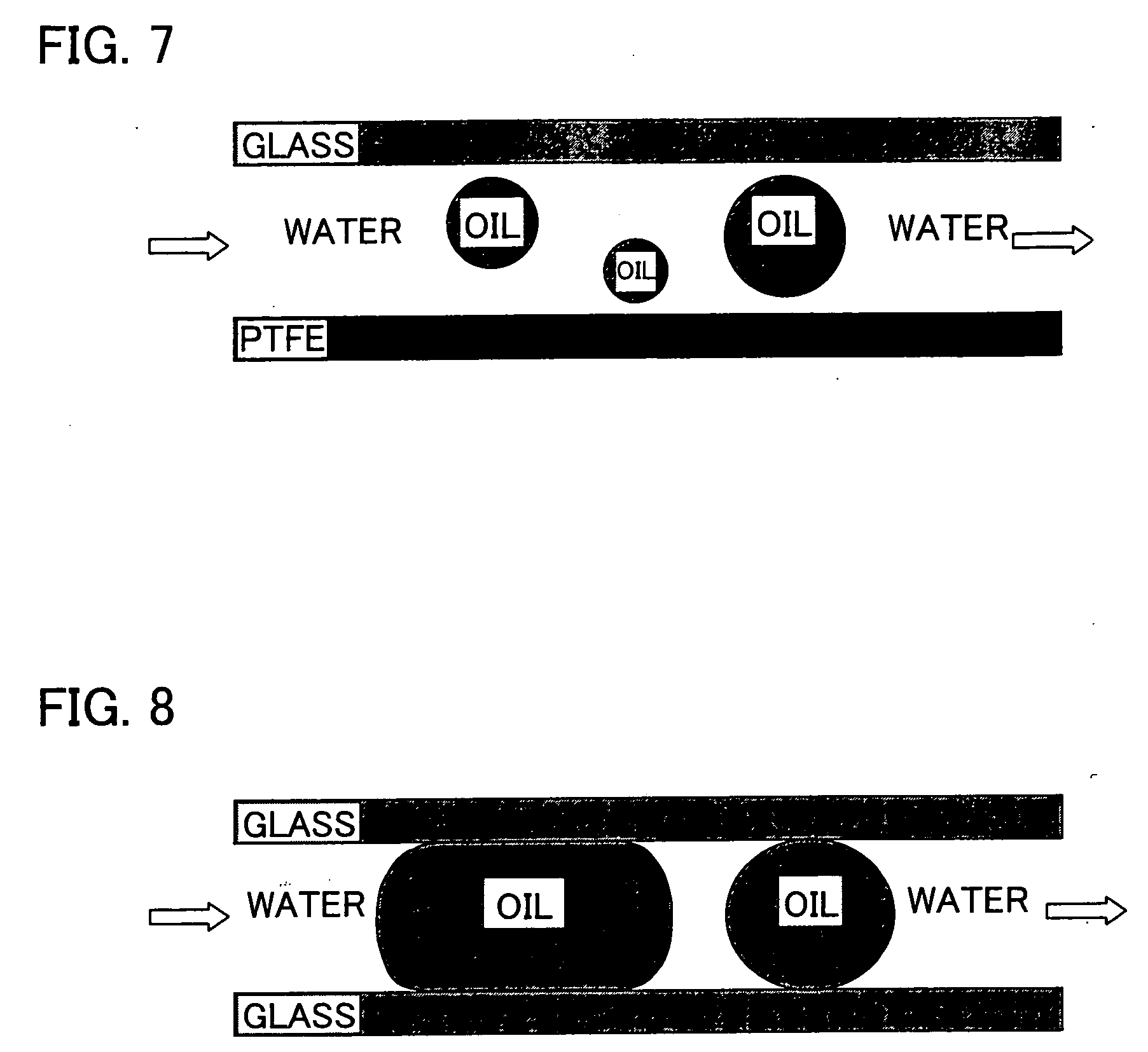Device and method of classifying emulsion and method of demulsifying emulsion
a technology of emulsion and liquid, which is applied in the direction of moving filter element filters, filtration separation, separation processes, etc., can solve the problems of inability to classify liquid droplets passing through the filter, long time to separate the emulsion into two liquids, and may keep the emulsion stable for a long tim
- Summary
- Abstract
- Description
- Claims
- Application Information
AI Technical Summary
Benefits of technology
Problems solved by technology
Method used
Image
Examples
example 1
[0161] For production of an emulsion, water and dodecane were supplied to a micromixer (produced by IMM GmbH; single mixer) at rates of 2.7 ml / min and 0.3 ml / min, respectively. Then, diameters of liquid droplets contained in a just-produced emulsion were measured by means of the laser diffraction / scattering particle size distribution analyzer (HORIBA LA-920).
[0162] Next, an outlet of the micromixer was connected to the supply port 5 of the classifying apparatus including the upper plate 2 made of glass and the lower plate 4 made of PE, and the emulsion was supplied to the classifying apparatus at a rate of 3 ml / min. Then, liquids discharged out of the exit 6 of the classifying apparatus were stored in a measuring cylinder (7 mm in diameter). Of generated aqueous phase part and oil phase part, the aqueous phase part was observed. If the aqueous phase part was clouded, failure of demulsification of the emulsion is indicated with x. On the other hand, if the aqueous phase part was cle...
example 2
[0163] Except for the use of a classifying apparatus including the upper plate 2 made of glass and the lower plate 4 made of PP, obtained liquids were observed as in Example 1. Observation results are shown in Table 1.
example 3
[0164] Except for the use of a classifying apparatus including the upper plate 2 made of glass and the lower plate 4 made of PTFE, obtained liquids were observed as in Example 1. Observation results are shown in Table 1.
PUM
| Property | Measurement | Unit |
|---|---|---|
| dynamic contact angle | aaaaa | aaaaa |
| residence time | aaaaa | aaaaa |
| diameter | aaaaa | aaaaa |
Abstract
Description
Claims
Application Information
 Login to View More
Login to View More - R&D
- Intellectual Property
- Life Sciences
- Materials
- Tech Scout
- Unparalleled Data Quality
- Higher Quality Content
- 60% Fewer Hallucinations
Browse by: Latest US Patents, China's latest patents, Technical Efficacy Thesaurus, Application Domain, Technology Topic, Popular Technical Reports.
© 2025 PatSnap. All rights reserved.Legal|Privacy policy|Modern Slavery Act Transparency Statement|Sitemap|About US| Contact US: help@patsnap.com



